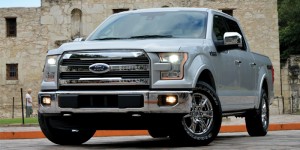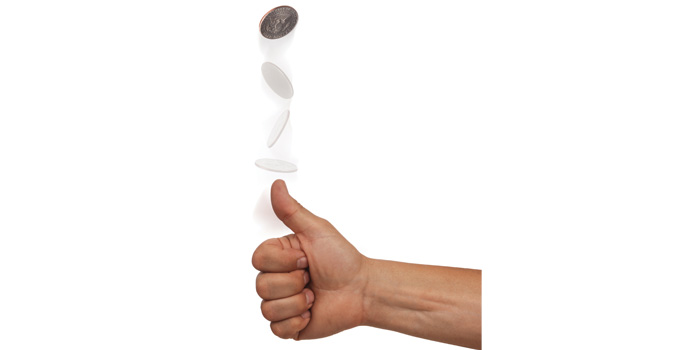My dad once said some wise words to me that many have heard before: “Attitude is everything.”
This phrase has been repeated to all of us throughout our lives, whether it came from a coach trying to get your head in the game or a teacher trying to get you through a tough class or project. We would hear this phrase when we just weren’t into the task at hand. Our attitude toward the situation was stopping us from getting it done.
The point is, we need to get it done. Our attitude towards the project affects not only ourselves but everyone around us. When I would get hit with this inner force of bad attitude, I always looked for someone or something to blame, making it miserable not only for me but for all of those around me.
Changes
I’ve been in this industry for almost 35 years and have taught I-CAR classes for more than 20 years. Just like many of you, I’ve seen many changes in vehicle designs and repairs. The recent addition of aluminum to mainstream vehicles has brought even more change to our industry.
 I come in contact with many people in our industry on a daily basis, from insurance appraisers to shop detailers. In conversations with all these professionals with different perspectives on the repair industry, I hear the same thing over and over: that people are constantly complaining about all the change. I often ask, “Why are they complaining?” The responses I get are: “I have to learn this,” “I have to buy that” and “I have trouble keeping up.” Yes, you do need to train. Yes, you do need to buy that. Yes, it is hard to keep up. But you still have to get it done. If you’re a manager or owner and have this attitude, what do you think it does to your team? This kind of attitude becomes a virus that can kill a shop. Cycle time and quality suffer as the attitude virus grows. One person in a shop with a bad attitude can affect any business and your employees’ paychecks.
I come in contact with many people in our industry on a daily basis, from insurance appraisers to shop detailers. In conversations with all these professionals with different perspectives on the repair industry, I hear the same thing over and over: that people are constantly complaining about all the change. I often ask, “Why are they complaining?” The responses I get are: “I have to learn this,” “I have to buy that” and “I have trouble keeping up.” Yes, you do need to train. Yes, you do need to buy that. Yes, it is hard to keep up. But you still have to get it done. If you’re a manager or owner and have this attitude, what do you think it does to your team? This kind of attitude becomes a virus that can kill a shop. Cycle time and quality suffer as the attitude virus grows. One person in a shop with a bad attitude can affect any business and your employees’ paychecks.
Get Over It
Change is not going to slow down, and technology is going to get more intense. That’s the way it is and will be. If you’re looking for a slowdown, don’t hold your breath. But before you start writing me letters on this, I want you to take a look. Change is also good. That simple statement is true. Do you still want to be writing estimates by hand? Remember how there were frame shops and body shops? Were we better before change? Is a frame rack better and faster than a John Deere tractor and an oak tree?
I am not here to say change is easy. I struggle with it every day (I still don’t Facebook). My dad taught me attitude is everything, and my mom taught me the flip side: that good will come from change. This is the part we fail to see, the part I call the big picture.
Snapshot
Walk into your shop and take a look around. Check out the welder the techs are using. Ask a technician who has worked with a Squeeze Type Resistance Spot Welder or STRSW if he prefers to use the spot welder or the GMAW welder or wire feed welder (MIG welder). I’ve had technicians say they would quit if we took the STRSW machine away. Why? Because it has reduced the weld time on vehicles dramatically, the quality of repair is better and we can duplicate factory build procedures. If your shop has purchased one of these machines, you know these welders increase productivity and morale in the shop. They were expensive, but worth every penny. You were pushed into buying it because of change and the need to be able to weld the new heat-sensitive steels. In the end, your attitude about it changed. I saw this time and time again with my own employer and all our shops.
Flip Side
 We’ve come a long way from using a come-along and a pole to straighten a frame – and we’re going to go a lot farther, too. When you look at the equipment being brought to our industry today because of the F-150, all I can say is, “It’s about time.” Shops have been struggling for years using 110-volt welders on jobs they were not equipped for. Steels today require much more power for heat control.
We’ve come a long way from using a come-along and a pole to straighten a frame – and we’re going to go a lot farther, too. When you look at the equipment being brought to our industry today because of the F-150, all I can say is, “It’s about time.” Shops have been struggling for years using 110-volt welders on jobs they were not equipped for. Steels today require much more power for heat control.
Consider buying a welder to work on aluminum. I see a welder that can properly weld on frames and the new stronger steels without warping or damaging the surrounding steel. I see a welder that can weld steel and aluminum and can MIG braze the new Hondas and Toyotas and GM. The multiple uses of these welders will advance a shop’s ability to repair all vehicles, not just aluminum. This gives a shop and its technicians a new toy that can make work faster, better and stronger for years to come. We need this equipment for more vehicles than just the F-150.
I was amazed when my employer started hands-on aluminum training for our technicians. They came in a little scared and worried with a little attitude, but once they saw the machines and learned how to use them, they left excited and ready to get back to work. They saw the flip side:
- The equipment was easy to use and fast.
- There were repairs they could do that were not possible before.
- The increased possibility of repair time vs. R&I of a new part.
You couldn’t buy the enthusiasm they left with. I never expected this response and was surprised at the enthusiasm on all levels from technicians to managers. I learned that most technicians want to be good at their job, and many want to learn more.
Enthusiasm
When you buy a new state-of-the-art welder, you make it possible to do repairs you’ve never done before: aluminum trailers, boats, and all sorts of business you need and want. If you bite the bullet and buy the aluminum dent repair equipment now available, your shop can repair what you were replacing in aluminum panels. That’s the cool thing about this change. Aluminum has been around for years, but now you can repair much more than in the past. This brings in much-needed repair time to shops versus the replacement of parts. You can also start telling customers you can do repairs on not just steel but other substrates, too. Effectively, you just doubled your shop’s repair capabilities and increased your possibility for new revenue. That’s why insurers and body shops should be excited about all this.
Look at plastic repair on bumper covers. We all were replacing them before plastic repair really caught on. Now, look at how many bumpers are repaired versus replaced. Both shops and insurers would much prefer to repair instead of replace. The revenue that goes to the shops and the time that goes to techs as a result of this benefit all in the industry in many ways.
Coaching
If you’re going to enter the aluminum game, a team approach is a great idea. Getting the whole shop on board will help to speed the
transition. Keep the big picture in mind and focus on the goal.
Change is going to happen no matter what. Approach it with the right attitude and it will be much less of a change than you think. This applies not just to you but to all around you. Avoid thinking and saying phrases like “we have to” or “you have to,” and instead use phrases such as “we want to” or “we need to.” This keeps the positive mojo working for a shop. For example, compare, “You have to take this class” to “I need you to learn the material in this class.” It doesn’t sound much different, but it can make a difference in attendees’ attitudes.
Change is constant and will never stop or slow down. How we approach this change will be the difference in making things difficult or easier. It’s your choice – as it is your attitude that will make the difference.














